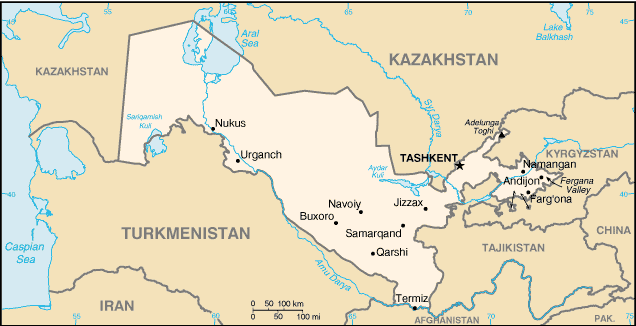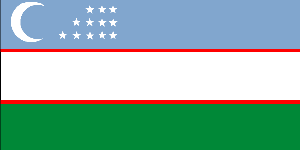
|
Uzbekistan
Background:
Russia conquered Uzbekistan in the late 19th century. Stiff resistance to the
Red Army after World War I was eventually suppressed and a socialist republic
set up in 1924. During the Soviet era, intensive production of "white gold"
(cotton) and grain led to overuse of agrochemicals and the depletion of water
supplies, which have left the land poisoned and the Aral Sea and certain rivers
half dry. Independent since 1991, the country seeks to gradually lessen its
dependence on agriculture while developing its mineral and petroleum reserves.
|

Climate and Terrain:
Climate: Mostly midlatitude desert, long, hot summers, mild winters; semiarid
grassland in east.
Terrain: Mostly flat-to-rolling sandy desert with dunes; broad, flat intensely
irrigated river valleys.
|
|
|
Economy overview:
Uzbekistan is a dry, landlocked country of which 11% consists of intensely
cultivated, irrigated river valleys. More than 60% of its population lives in
densely populated rural communities. Uzbekistan is now the world's second
largest cotton exporter, a large producer of gold and oil, and a regionally
significant producer of chemicals and machinery.
|
|